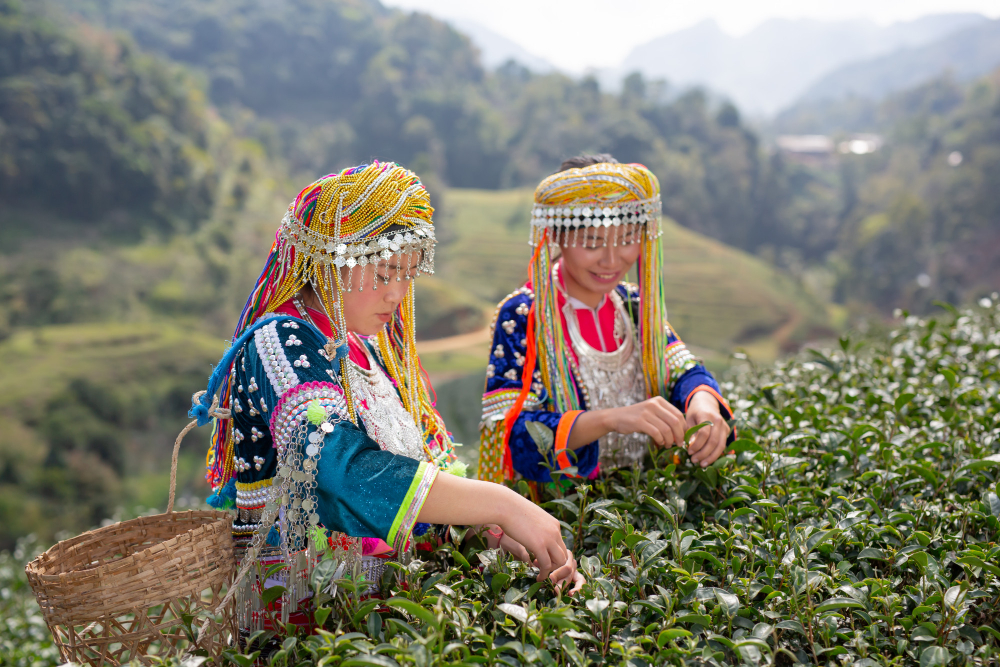
Nestled in the lap of the Himalayas, Sikkim Culture is a jewel among the northeastern states of India, celebrated for its breathtaking landscapes and vibrant cultural diversity.
The cultural mosaic of Sikkim is a reflection of the various communities that call this enchanting region home, each contributing to the unique tapestry that makes Sikkim truly special.In this exploration of Sikkim culture, we delve into the rich heritage, traditions, festivals, and art forms that define this Himalayan haven.
1. Historical Tapestry of Sikkim:
Sikkim’s history is as diverse as its landscape. Over the centuries, this region has witnessed the ebb and flow of different cultures and dynasties. From the early days of the Lepchas, the indigenous inhabitants, to the Bhutias and the Nepalese. who later settled in the region, Sikkim’s cultural identity has evolved through a harmonious amalgamation of these influences.
The Kingdom of Sikkim was ruled by the Chogyal monarchy until its merger with India in 1975. This historical backdrop has left an indelible mark on the culture
of Sikkim, with its traditions and rituals deeply rooted in its royal past.2. Cultural Diversity:
Sikkim is a melting pot of various ethnicities, each with its distinct language, customs, and attire. The three main communities – Lepchas, Bhutias, and Nepalese – coexist harmoniously, creating a vibrant and diverse cultural milieu. The Lepchas, considered the original inhabitants, have their own unique language and cultural practices, emphasizing a close connection with nature.
The Bhutias, with their origins in Tibet, bring with them a rich tapestry of Buddhist traditions. Monasteries, prayer flags, and the rhythmic chants of monks are integral parts of the Bhutia cultural landscape. On the other hand, the Nepalese. who form a significant part of the population, infuse Sikkim with their lively festivals, vibrant music, and colorful dances.
3. Festivals that Illuminate Sikkim:
The festivals of Sikkim are a true celebration of its cultural diversity. Dashain and Tihar, celebrated by the Nepalese community, are marked by elaborate rituals, vibrant processions, and the lighting of traditional oil lamps.Losar, the Tibetan New Year, is a time when monasteries come alive with masked dances and religious ceremonies, offering a glimpse into the spiritual heart of Sikkim.
Saga Dawa, Bumchu, and Pang Lhabsol are other festivals that showcase the unique blend of spiritual and cultural elements in Sikkim.These celebrations not only bring communities together but also attract visitors from far and wide, providing an opportunity to immerse themselves in the cultural vibrancy of the region.Sikkim Culture
4. Spirituality Woven into the Fabric:
Sikkim is often referred to as the “Land of Monasteries,” and rightfully so. The state is adorned with numerous monastic institutions, each narrating tales of spirituality and devotion.Enchey Monastery, Rumtek Monastery, and Pemayangtse Monastery are among the prominent ones, offering not just religious sanctity but also architectural marvels.
The monasteries host festivals, including the popular Chaam dances, where masked performers depict stories from Buddhist mythology. These spiritual havens contribute significantly to the cultural identity of Sikkim, attracting pilgrims and tourists alike.Sikkim Culture
5. Traditional Attire and Handicrafts:
The traditional attire of Sikkim reflects the cultural identity of its people.The Lepchas wear unique costumes adorned with intricate designs, while the Bhutias showcase their love for vibrant colors and intricate embroidery.
The traditional dress of the Nepalese, influenced by their ethnic roots, adds to the kaleidoscope of Sikkim’s cultural panorama.Handicrafts play a pivotal role in preserving and promoting Sikkim’s cultural heritage.Thangka paintings, intricate wood carvings, handwoven carpets, and bamboo artifacts are some of the exquisite crafts that showcase the artistic prowess of the local communities.
These crafts not only serve as a source of livelihood for many but also contribute to the flourishing tourism industry.6. Culinary Delights:
Sikkimese cuisine is a delightful fusion of flavors, influenced by the diverse communities that call this state home. Momos, thukpa, gundruk, and phagshapa are just a few examples of the delectable dishes that tantalize the taste buds of visitors.
The use of locally sourced ingredients and traditional cooking methods adds a unique charm to Sikkim’s culinary offerings, making it a gastronomic paradise for food enthusiasts.
7. Eclectic Music and Dance:
Music and dance are integral components of Sikkim’s cultural expression. The Maruni dance of the Nepalese, Pangtoed Chaam of the Bhutias, and Sikkiyoksa dance of the Lepchas, accompanied by traditional instruments, vividly express each community’s cultural identity, celebrating the joy and harmony in Sikkim.
8. Preserving Sikkim’s Cultural Heritage:
While Sikkim’s cultural diversity is a source of pride, there is a concerted effort to preserve and promote these traditions. Cultural festivals, organized by the state government, showcase the best of Sikkim’s art, music, dance, and crafts. These events showcase local talent and draw a global audience, promoting appreciation for Sikkim’s cultural richness.
Educational initiatives, museums, and cultural institutions play a crucial role in passing on the cultural legacy to the younger generation. Efforts are underway to document and digitize traditional practices, ensuring that the essence of Sikkim’s culture is not lost to the sands of time.
Conclusion:
In the heart of the Himalayas, Sikkim’s culture stands as a testament to the harmonious coexistence of diverse communities. Its rich history, colorful festivals, spiritual heritage, traditional arts, and delectable cuisine come together to create a cultural tapestry that is as enchanting as the landscapes that surround it. As Sikkim continues to embrace modernity, there is a collective commitment to preserving and celebrating the unique identity that defines this Himalayan haven. Whether it’s the rhythmic beats of traditional drums or the aroma of steaming momos, Sikkim invites visitors to immerse themselves in a cultural experience that is as warm and inviting as the people who call it home.
Other Articles:
















